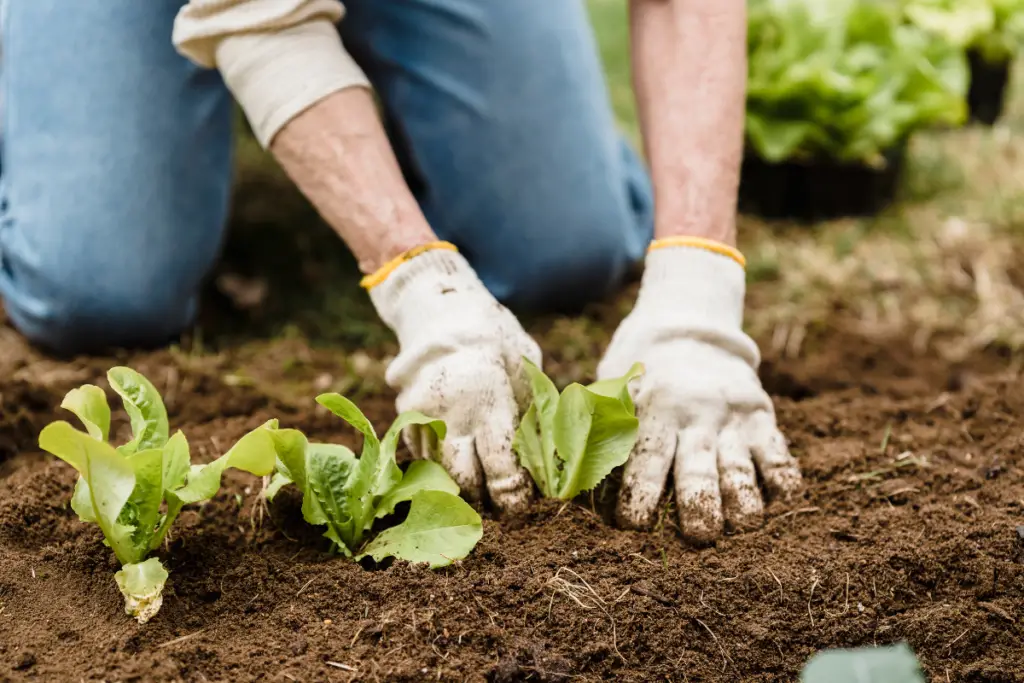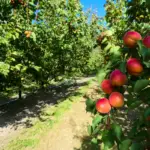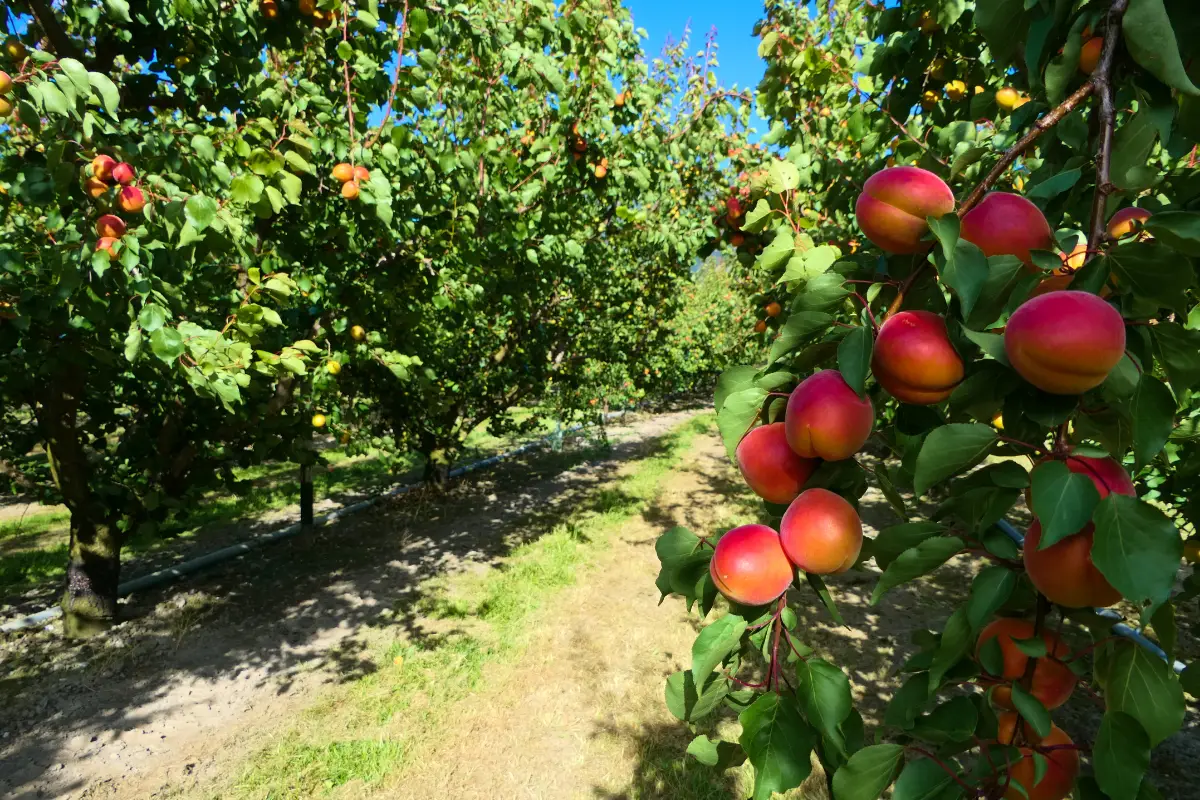Sandy soil can be a challenge for many gardeners. Its low water retention and low nutrient content can make it difficult to grow healthy plants. However, with the right plants and amendments, sandy soil can be turned into a productive garden bed.
When it comes to growing vegetables in sandy soil, some plants are better suited than others.
Root vegetables like carrots and radishes can thrive in sandy soil, as can strawberries, beans, and cucumbers.
Peppers and tomatoes also do well in sandy soil, as long as they receive enough water and nutrients.
Squashes, onions, lettuce, parsnips, potatoes, oregano, and rosemary are other vegetables that can grow in sandy soil.
To improve sandy soil, gardeners can add organic matter such as compost or manure. This will help the soil retain water and nutrients, as well as improve its structure.
Another option is to use cover crops, which can help to add nitrogen and other nutrients to the soil.
With the right plants and amendments, gardeners can turn sandy soil into a productive garden bed that yields healthy and delicious vegetables.

Table of Contents
Understanding Sandy Soil
Sandy soil is a type of soil that is characterized by its low organic matter and poor water-holding capacity.
It is composed of large particles that are visible to the naked eye, which means that water can easily drain through the soil.
This can be a challenge for plants as they may not be able to access the water they need to grow.
However, sandy soil has its advantages. It warms up quickly in the spring, which means that plants can be planted earlier in the season.
Additionally, sandy soil is easy to work with as it is loose and friable. This means that it is easy to dig and till, which can be a benefit for gardeners.
To determine if soil is sandy, one can perform a simple test. Take a handful of soil and dampen it.
Try rolling it into a sausage shape. Sandy soil will crumble and fall apart, and the individual grains will be visible.
Clay soil, on the other hand, will stick together easily and can be rubbed to a dull sheen.
When it comes to growing vegetables in sandy soil, it is important to choose plants that are adapted to this type of soil.
Some vegetables that grow well in sandy soil include tomatoes, peppers, carrots, and radishes.
These plants have shallow root systems, which means that they can access the nutrients and water that are available in the top layer of soil.
To improve sandy soil, gardeners can add organic matter such as compost, manure, or leaf mold.
This will help to increase the soil’s water-holding capacity and improve its fertility.
Additionally, adding mulch to the soil can help to retain moisture and reduce soil erosion.
Vegetable Types Suitable for Sandy Soil
When it comes to gardening in sandy soil, choosing the right vegetables is key. Some vegetables thrive in sandy soil, while others struggle to grow.
Here are some vegetable types that are suitable for sandy soil.
Root Vegetables
Root vegetables are a great option for sandy soil because they prefer loose, well-draining soil.
Some root vegetables that grow well in sandy soil include:
- Carrots
- Radishes
- Parsnips
- Sweet potatoes
When planting root vegetables in sandy soil, it’s important to keep the soil moist to encourage healthy growth.
Adding organic matter, such as compost or manure, can also help improve soil fertility.
Leafy Greens
Leafy greens are another vegetable type that can thrive in sandy soil.
Some leafy greens that grow well in sandy soil include:
- Lettuce
- Arugula
- Spinach
- Swiss chard
When planting leafy greens in sandy soil, it’s important to keep the soil moist to prevent the leaves from wilting.
Adding a layer of mulch can also help retain moisture in the soil.
Vining Vegetables
Vining vegetables, such as cucumbers and squash, can also grow well in sandy soil.
These vegetables prefer loose, well-draining soil and can benefit from the added warmth that sandy soil provides.
Some vining vegetables that grow well in sandy soil include:
- Cucumbers
- Squash
- Pumpkins
- Melons
When planting vining vegetables in sandy soil, it’s important to provide support for the vines to prevent them from sprawling on the ground.
Adding a layer of mulch can also help retain moisture in the soil.
Specific Vegetables That Thrive in Sandy Soil
Sandy soil can be challenging to grow vegetables in, but there are many options that can thrive in this type of soil.
Here are some specific vegetables that do well in sandy soil:
Carrots
Carrots are a root vegetable that can grow well in sandy soil.
Sandy soil allows for good drainage, which is important for carrots as they do not like to be waterlogged.
However, it is important to ensure that the soil is not too sandy, as this can cause the carrots to grow crooked or forked.
Adding organic matter, such as compost or well-rotted manure, can help improve the soil’s structure and provide some nutrients for the carrots to grow strong and healthy.
Radishes
Radishes are a fast-growing vegetable that can be grown in sandy soil.
They prefer well-drained soil and can tolerate some drought, making them a good choice for sandy soil.
Radishes also do well in cooler temperatures, so they can be planted early in the spring or late in the fall.
Planting them in rows and thinning them out as they grow can help ensure they have enough space to develop properly.
Spinach
Spinach is a leafy green that can grow well in sandy soil.
It prefers soil that is well-drained and rich in organic matter, so adding compost or other organic materials to the soil before planting can help improve its structure and provide some nutrients for the spinach to grow.
Spinach also prefers cooler temperatures, so it can be planted early in the spring or late in the fall.
Cucumbers
Cucumbers are a vine vegetable that can grow well in sandy soil.
They prefer soil that is well-drained and moist, but not waterlogged.
Adding organic matter to the soil can help improve its structure and provide some nutrients for the cucumbers to grow.
Cucumbers also need a trellis or other support structure to grow on, as they can take up a lot of space in the garden.
Cultivation Techniques for Sandy Soil
Soil Improvement
Sandy soil is known to have low water and nutrient content, making it difficult to grow vegetables. However, there are several techniques that can be employed to improve the soil quality.
One effective method is to add organic matter to the soil. This can be done by incorporating compost, manure, or other organic materials into the soil.
Organic matter helps sandy soil to retain moisture and nutrients, making it more fertile and conducive for plant growth.
Another technique is to use cover crops such as clover or rye grass to improve soil structure and fertility.
These crops help to hold the soil in place, prevent erosion, and add nutrients to the soil.
Irrigation Methods
Irrigation is an important aspect of vegetable cultivation in sandy soil.
Sandy soil has a low water-holding capacity, which means that it drains quickly and can become dry.
Therefore, it is important to irrigate sandy soil frequently and in small amounts to maintain soil moisture.
Drip irrigation is a good option for sandy soil, as it delivers water directly to the roots of the plants, reducing water loss due to evaporation.
Mulching is another technique that can be used to conserve soil moisture.
Mulch helps to retain moisture in the soil by reducing water loss due to evaporation and suppressing weed growth.
Fertilization Practices
Fertilization is essential for vegetable cultivation in sandy soil.
Sandy soil has a low nutrient content, which means that it is important to add fertilizers to the soil to ensure that the plants have access to the nutrients they need to grow.
Organic fertilizers such as compost, manure, or bone meal are good options for sandy soil, as they add nutrients to the soil and improve soil fertility.
Inorganic fertilizers can also be used, but it is important to use them sparingly and according to the manufacturer’s instructions to avoid over-fertilization, which can lead to nutrient imbalances and plant damage.
It is recommended to conduct a soil test to determine the nutrient content of the soil and to determine the appropriate fertilizer application rate.
By employing these cultivation techniques, vegetables can be grown successfully in sandy soil.
Challenges in Growing Vegetables in Sandy Soil
Growing vegetables in sandy soil can be challenging due to its unique characteristics.
Sandy soil has a coarse texture, which makes it difficult to retain moisture and nutrients.
This results in poor plant growth and yield.
In this section, we will discuss the challenges of growing vegetables in sandy soil and how to overcome them.
Nutrient Leaching
One of the biggest challenges of growing vegetables in sandy soil is nutrient leaching.
Sandy soil has a low capacity to hold nutrients, and as a result, nutrients are easily washed away by rain or irrigation.
This means that plants grown in sandy soil are often deficient in essential nutrients like nitrogen, phosphorus, and potassium.
To overcome this challenge, gardeners can add organic matter to the soil.
Organic matter can help to improve soil structure, increase water-holding capacity, and enhance nutrient retention.
Gardeners can also use slow-release fertilizers to provide a steady supply of nutrients to plants over time.
Water Retention
Another challenge of growing vegetables in sandy soil is water retention.
Sandy soil has large pore spaces that allow water to drain quickly, which can lead to drought stress in plants.
This means that plants grown in sandy soil require more frequent watering than those grown in other soil types.
To overcome this challenge, gardeners can use mulch to help retain moisture in the soil.
Mulch can help to reduce evaporation, keep the soil cool, and prevent erosion.
Gardeners can also use drip irrigation to provide a slow, steady supply of water directly to the roots of plants.
Solutions to Sandy Soil Challenges
Growing vegetables in sandy soil can be challenging due to the soil’s low nutrient content and poor water retention.
However, there are several solutions to these challenges that can help gardeners achieve a successful harvest.
Mulching
Mulching is an effective way to improve sandy soil’s water retention and nutrient content.
Adding a layer of organic material such as straw, leaves, or grass clippings to the soil’s surface can help retain moisture and prevent evaporation.
Additionally, as the organic material decomposes, it adds nutrients to the soil, improving its overall quality.
Crop Rotation
Crop rotation is another effective solution for sandy soil.
Planting a different crop in the same location each year can help prevent soil depletion and nutrient imbalances. For example, legumes such as beans and peas can add nitrogen to the soil, which is essential for plant growth.
Rotating these crops with other vegetables can help maintain soil health and fertility.
Composting
Composting is a great way to add nutrients to sandy soil.
By composting kitchen scraps, yard waste, and other organic materials, gardeners can create a nutrient-rich soil amendment that can be added to the garden bed.
Composting also helps improve soil structure, which can help sandy soil retain moisture and nutrients.
Conclusion
In conclusion, sandy soil may not be the most ideal soil type for growing vegetables, but it is definitely possible to grow a variety of vegetables in this type of soil.
With proper preparation and care, sandy soil can become a fertile ground for growing delicious and nutritious vegetables.
Some of the best vegetables that can grow in sandy soil include tomatoes, cucumbers, peppers, beans, carrots, radishes, lettuce, potatoes, and strawberries.
These vegetables thrive in sandy soil because it is well-draining and warm, which helps them grow faster and produce better yields.
It is important to note that sandy soil lacks organic matter, which is essential for plant growth.
Therefore, it is recommended to amend sandy soil with compost, manure, or other organic materials to improve its fertility and water-holding capacity.
Additionally, regular watering and fertilization are crucial to ensure that the vegetables receive the necessary nutrients and moisture to grow healthy and strong.
- How to Dry Basil Leaves: A Professional Guide
- Is an Avocado a Fruit or Vegetable? Simple Answer and Explanation
- Does Pineapple Have Seeds? Exploring the Anatomy of Pineapples
- Blooming Through Winter: Can I Grow Vegetables Indoors in the Winter?
- What Can You Grow in a Greenhouse All Year Round: A Guide to Year-Round Greenhouse Gardening
- Are Blueberries Blue? Debunking the Myth of Their Color
















